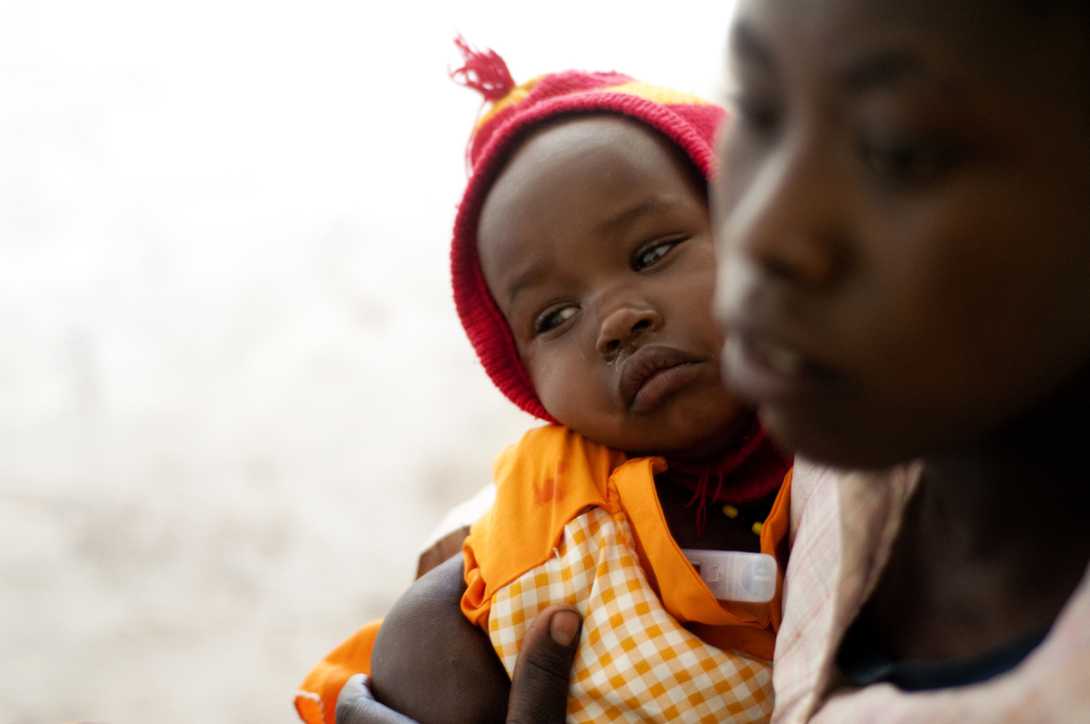
One of great things the Connect4Climate team loves, is running into the wonderful grassroots "green" initiatives around the world.

One of great things the Connect4Climate team loves, is running into the wonderful grassroots "green" initiatives around the world.
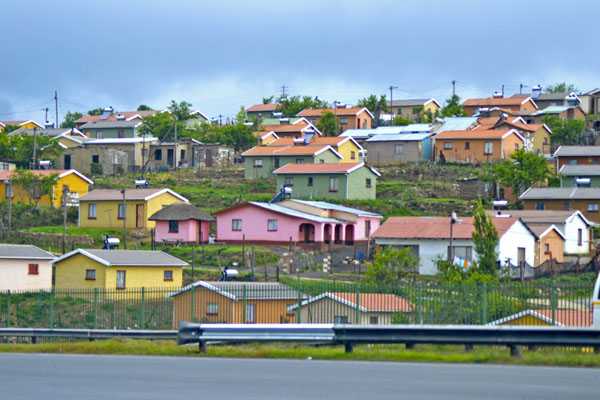
1st place winner 13-17 age category
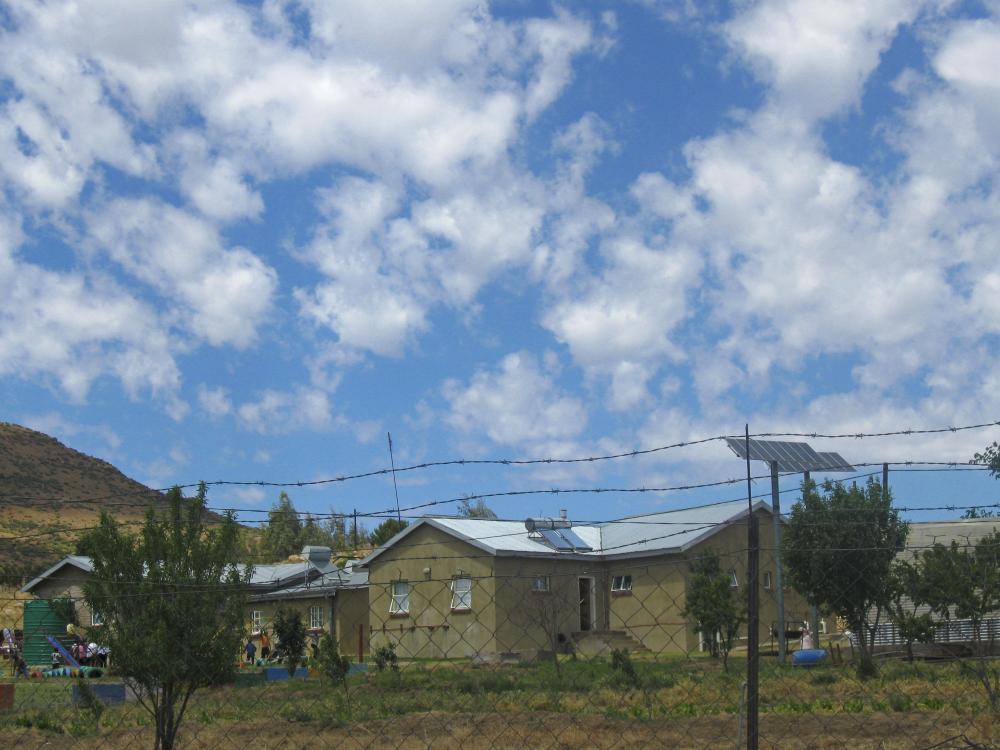
<p><strong>Solar Panels, The Sunny Energy – Dina Osman – South Africa </strong></p>
<p>Most of these houses are low cost housing and some are government provided homes yet almost all of them have solar panels fitted on their roofs. Initiatives like this are great not only in providing electricity for the people but doing it in a sustainable manner. Projects like this should be spread all over and governments should encourages the people into adopting sustainable ways of generating electricity.</p>
<p style="font-size: 13.008px; line-height: 20.0063px; text-align: center;"><img alt="" src="/sites/default/files/images/Dina_Osman2.jpg" style="width: 1000px; height: 667px;" /></p>
<p><strong>2nd place winner 18-24 age category</strong></p>
<p><strong>Improved Cooking Stoves – Alphonse Karenzi –Rwanda </strong></p>
<p>This stove is easily made from local materials. It surely saves up to 85% of firewood compared to traditional stoves and reduces smoke emission significantly.</p>
<p style="font-size: 13.008px; line-height: 20.0063px; text-align: center;"><img alt="" src="/sites/default/files/images/Alphonse_KARENZI_.JPG" style="width: 1000px; height: 750px;" /></p>
<p><strong>3rd place winner 18-24 age category</strong></p>
<p><strong>Tire burning for cooking – Malawi - Violet Mojo</strong></p>
<p>A lack of access to clean household energy in developing countries forces more than a third of humanity-2.4 billion people to cook and heat their homes by burning wood, dung and crop waste.The families face an impossible dilemma: cook with solid fuels and suffer health consequences or go without uncooked meal. Despite this, smoke claim the lives of nearly 800,000 children each year and emit gases into the atmosphere contributing to climate change and global warming. Thus the need for sustained and environmental friendly energy sources</p>
<p style="font-size: 13.008px; line-height: 20.0063px; text-align: center;"><img alt="" src="/sites/default/files/images/Violet_mojo.jpg" style="width: 405px; height: 544px;" /></p>
<p><strong>Energy in Rwanda – Teddy Kinyanjui – Kenya - </strong><br />
Pilot testing chrocal briquette making out of papryus and peat for the min.of energy in Rwanda.</p>
<p style="text-align: center;"><br />
<img alt="" src="/sites/default/files/images/teddy_kinankuji.jpg" style="width: 604px; height: 453px;" /></p>
<p style="text-align: center;"><em><strong>*Watch this video from 1st place winner Teddy Kinyanjui speak about his photo submission</strong></em></p>
<p>[video:https://www.youtube.com/watch?v=BMkcDggK4UY]</p>
<p> </p>
<p><strong>2nd place winner 25-35 age category</strong></p>
<p><strong>Claystoves - Use Less Firewood and Conserve Energy! - Asimenyekyala Nthakomwa – Malawi -</strong> <br />
Claystoves are one efficient energy saving technology that should be promoted if we are to promote sustainable use of forest resources. One woman testified to using the same bundle of firewood for two weeks with a claystove while she could use it for a week when she was using the three stone traditional stove method which is common in rural communities. Lets us empower the women who are the ones mostly fetching firewood for the homes by training them in claystove making which they can also use as an income generating activity.</p>
<p style="font-size: 13.008px; line-height: 20.0063px; text-align: center;"><img alt="" src="/sites/default/files/images/Claystoves.JPG" style="width: 404px; height: 659px;" /></p>
<p><strong>3rd place winner 25-35 age category</strong></p>
<p><strong>I Prefer My Horse – Azzedine Jamal – Morocco -</strong> <a href="mailto:contact@azzedinejamal.com">contact@azzedinejamal.com</a><br />
A nomad in the desert preferred to abandon his car to return to the horse: ”gasoline? is too expensive,” he said.</p>
<p style="font-size: 13.008px; line-height: 20.0063px; text-align: center;"><img alt="" src="/sites/default/files/images/Azzedine_Jamal.jpeg" style="width: 400px; height: 300px;" /></p>
[video:https://vimeo.com/106242044?byline=0]
When will the Earth reach its climate tipping points?
Source: Disruption, 2014
The IPCC has produced a video on its Fifth Assessment Report (AR5). The third part on the Working Group III contribution to AR5 is now available on http://www.mitigation2014.org
Source: IPCC 2014
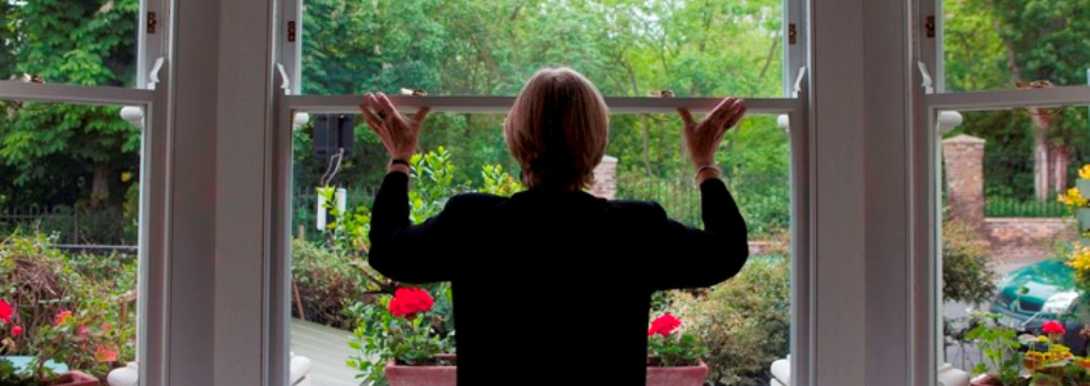
There are 26 million homes in the United Kingdom. Together they contribute 27% of the UK's carbon emissions, making the housing sector a vital part of the goverment's committment to an 80% reduction in carbon emissions by 2050.
Since 2007, the award-winning SuperHomes network has promoted the benefits of eco refurbishment using free Open Days. Pioneering owners of some of the UK’s most energy efficient homes host free tours and Q&A’s each September. SuperHomes are older homes that have been refurbished for greater comfort, lower bills and at least 60% fewer carbon emissions.
Currently there are over 180 registered SuperHomes in the UK and over 70,000 people have visited one. The aim is to inspire visitors to take action to green their own homes, by providing actionable ideas, such as improving insulation, installing alternative heating sources or producing their own renewable energy. The network hopes to register 500 SuperHomes by 2020 and attract 2 million visitors.
.jpg)
Visitors at a modern SuperHome in Birmingham
It is estimated that as many as 80% of all UK homes that will be in standing in 2050 have already been built. Of particular concern are the 7 million solid wall properties, most of which are difficult to heat. To meet its target of an 80% reduction in carbon emissions by 2050, the UK should be refurbishing 600,000 homes a year. At the current rate of change it will take over 500 years to refurbish these homes.
Jurgen Huber, who recently joined the network says:
"My house is now 100% carbon neutral. Along with my wife and two children, we use and generate 3300 kWh of electricity. We have no gas connection so we cook with the most energy efficient induction cooker, we heat water with an electric instantaneous water heater, and we heat rooms with a highly air source heat pump and electric underfloor heating. This is only possible because we insulated the house to a very high standard."
Huber explains that the first phase of his home renovation was done on a budget of £4000. This paid for all insulation materials, the air source heat pump, an induction cooker, and LED lighting. The PV solar panels added afterwards cost £12,000 and were financed with a bank loan. In 8 years Huber may make a bit of money but that’s secondary. He wanted to prove that anyone can have a retrofitted energy neutral house on a tight budget.
"The result is that we’ve a very comfortable home that can be quickly heated or cooled at very little cost. At the same time we’ve maintained the 1920s period character of the property which is something we love."
Huber's testimonial is a good example of how the SuperHomes network harnesses the enthusiasm of pioneering households to demonstrate the benefits of switching to low energy living.
The network's open days help visitors gain the confidence to green their own homes. Free tours and Q&A sessions allow visitors to find out more about both the benefits and the challenges involved in refurbishing an older home.
Find out more about SuperHomes' September Open Days.
SuperHomes is a National Energy Foundation (NEF) project. NEF is an independent charity working to improve the use of energy in buildings.
[video:https://vimeo.com/95527812]
White Roofs is an Action4Climate documentary about another initiative to reduce household emissions, the White Roof Project in New York. Entered by Matt Dunne.

The IPCC’s Fifth Assessment Report firmly centered on the reality of human-driven climate change. If we don’t take immediate and tangible steps to reduce the consequences of these actions, we will face an environmental crisis that will have a major impact on mankind’s existence. Here in Tokyo, we are extremely concerned about this danger, as it poses a huge threat to our goal of becoming a sustainable and environmentally-friendly city.
In the year 2030, it is estimated that the number of people living in urban areas will exceed 60 percent of the world’s population, and measures at the city level are now crucial. The effects of climate change are already becoming apparent in a range of forms, and Tokyo is no exception. Tokyo has undertaken several measures to mitigate these effects, including launching the world’s first urban cap-and-trade program. In addition, Tokyo is implementing a number of pioneering initiatives, such as measures to counteract storm surges and floods, as well as major earthquakes, and advancing urban planning to realize a more resilient city.
The IPCC’s Fifth Assessment Report firmly centered on the reality of human-driven climate change. If we don’t take immediate and tangible steps to reduce the consequences of these actions, we will face an environmental crisis that will have a major impact on mankind’s existence. Here in Tokyo, we are extremely concerned about this danger, as it poses a huge threat to our goal of becoming a sustainable and environmentally-friendly city.
In the year 2030, it is estimated that the number of people living in urban areas will exceed 60 percent of the world’s population, and measures at the city level are now crucial. The effects of climate change are already becoming apparent in a range of forms, and Tokyo is no exception. Tokyo has undertaken several measures to mitigate these effects, including launching the world’s first urban cap-and-trade program. In addition, Tokyo is implementing a number of pioneering initiatives, such as measures to counteract storm surges and floods, as well as major earthquakes, and advancing urban planning to realize a more resilient city.
At the same time, Tokyo is working with cities all over the world and engaging in a variety of international activities. In this way, Tokyo’s achievements have been introduced to the world, and we are proud to have gained high recognition in reports issued by the World Bank. Of these initiatives, Tokyo’s cap-and-trade program has received especially high praise internationally. In the program’s first year, FY2010, a 13 percent reduction in total CO2 emissions from base-year figures was achieved.
Further reductions were achieved in FY2011 and FY2012, with a 22 percent reduction from base-year figures recorded for both periods. Achievements to date have far surpassed the mandatory 6 or 8 percent reduction rate, producing a significant effect. Tokyo Cap-and-Trade has introduced retrofitting projects backed by vast amounts of investment for energy-saving technologies. Practical examples of which include the installation of LED lights, more efficient heating equipment, and improved day-to-day operational efforts.
[video:https://vimeo.com/95527812]
We believe Tokyo’s success is highly reliant on a positive response from various stakeholders, including building owners, developers, tenants and related businesses following our initiatives. A lot of credit needs to go to the facilities under Tokyo Cap-and-Trade, including facility owners and related businesses that responded very positively to the program, resulting in its continued success.
As the 2020 Tokyo Olympic and Paralympic Games approach, Tokyo will continue to promote effective energy conservation and CO2 reduction measures in order to resolve climate change related issues and further strengthen energy policies, including greatly expanding the use of renewable energy, with a view to the global environment.
The World Bank’s “Putting a Price on Carbon” statement is very meaningful, as it will become a driving force behind the promotion of effective measures for climate change mitigation. If all of the world’s cities and nations cooperate to implement a variety of well-thought-out programs, promotion of measures for climate change issues will lead to a reduction in CO2 emissions, and even help avoid an eventual global environmental crisis.
As the Governor of Tokyo, a major city advancing innovative climate change mitigation measures, I endorse the World Bank’s “Putting a Price on Carbon” statement and express my full support. Firmly believing that this World Bank initiative will contribute to the sustainable development of the earth’s environment, Tokyo will call for other cities, nations, and companies that share in the same objectives to come together by endorsing this statement.

[video:https://vimeo.com/7970557]
Spend a little bit of time browsing through the UN's newly launched website for Rio+20, and you begin to see what the future of development looks like. Not only that, you get a glimpse of how important creating a common platform that the world can use to imagine the future of humanity is. Global problems like climate change can be hard to communicate on such a vast scale. Distilling the science in a way that relates to both the learned academic and the casual browser is daunting to think about.
The entrance of telecommunication tools make the task of distilling and dissemination of information a much easier task to accomplish from a global perspective. By creating a common knowledge platform that is available to everyone, local communities are able to absorb, synthesize and localize the knowledge for themselves. Further more, they are able to upstream their local knowledge to a global audience. This experiential exchange of ideas is critical to solving global problems like climate change. True, not everything that works locally can be applied globally. Not all solutions easily bridge the "glocal" dilemma - meaning, local tacit knowledge doesn't always scale or replicate well.
But this is not neccessarily a problem. The key is not in replicating what the solution was for a local community, but rather, how that community approached a particular problem. Process is a central ingredient in successfully upstreaming and sharing of ideas. For example, look at some of the local efficient cook stove solutions that were submitted to our photo/video competition. Alphonse Karenzi's clean cook stove was engineered using locally made materials. His solution reduces the amount of firewood used by up to 85%. While this solution is innovatively applied, the process of getting to that solution is more important. By approaching the problem from a "what can I do here locally to contribute a solution to climate change?" he was able to utilize what was locally available to him. This approach is very much the same way someone in the city, who has access to energy, might use to conserve energy instead of wasting. Two different scenarios, unified by the desire to contribute to a global problem.
The spirit of collective doing is sometimes more effective than whatever solution you are using to solve a particular problem. This is why the UN's Future We Want platform of idea sharing is important to our future. While all the solutions might be different, unique, and varying in their degree of effectiveness, it is that unification of everyone's efforts into one global movement. Sharing is caring, as it were. We all dream about our futures, with grand ideas and visions of a Utopia far different from our present realities. But in order for us to realize those dreams, each of us has to contribute to the whole. What can you do locally to bring the "Future You Want" closer to reality?

With growing populations and increasing impacts from climate change, forward-thinking cities are scrambling to adopt green infrastructure to become more resilient. An entry to our Action4Climate video competition “Climate TV, City Climate” discusses some of the issues cities are facing and how green infrastructure solutions can help a city cope with increased heat and stormwater run-off. Green roofs, green spaces and flood management systems can help cities like Rotterdam manage climate impacts.
[video:https://vimeo.com/103463647]
Elsewhere, cities are innovating with renewable energy and resource management systems to yield major reductions in carbon emissions and improved climate resilience. Visionary water utilities are beginning to recognize the tremendous amount of valuable resources that lie in city wastewater. Traditional wastewater treatment is extremely energy intensive; it also generates large volumes of sludge that is typically sent to landfill where it releases significant amounts of greenhouse gas emissions.
In contrast, a process known as bio-digestion considerably lowers a city’s carbon footprint. Bio-digestion harnesses the large amounts of energy stored in municipal wastewater and provides a useful byproduct in the form of a nutrient-rich soil. Overall, this approach contributes to improving air quality for residents, and generates handsome economic savings that can be reinvested in local economies.
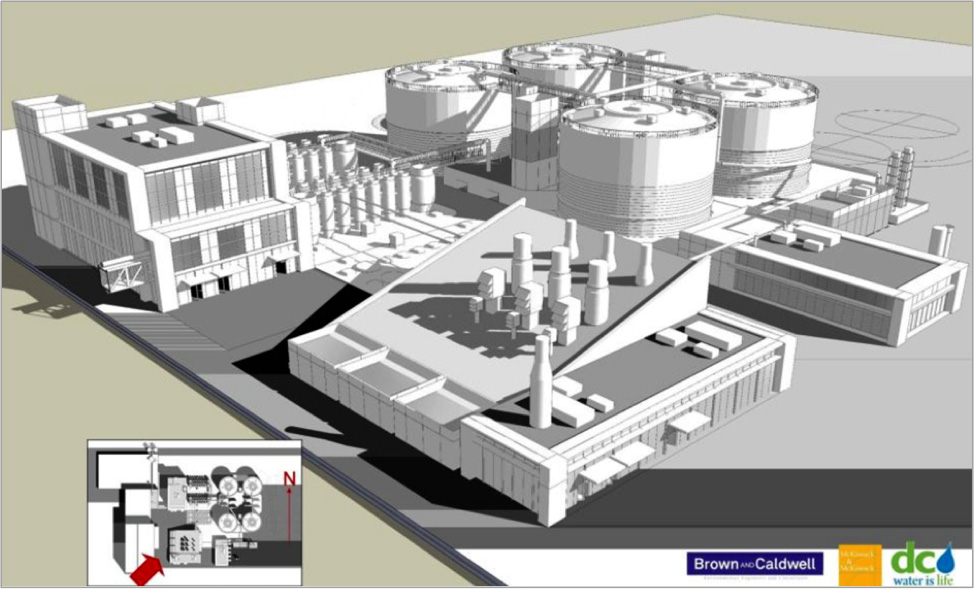
The Connect4Climate team was recently invited by DC Water, the water utility serving the city of Washington D.C., to visit a state of the art bio-digestion facility set to come online later this year. The facility is being built on the site of the city’s wastewater treatment plant which treats 370 million gallons (1,400,000 m³) per day. The bio-digester will generate 13 MW of electricity onsite by using the biogas captured from the wastewater sludge. With the wastewater treatment plant currently being the largest user of grid electricity in Washington D.C., the renewable energy generated by the bio-digester will reduce DC Water’s electricity consumption by a third and cut carbon emissions by approximately 50,000 metric tons of CO2e per year. This is equivalent to taking over 10,000 passenger vehicles off the road. It will also save DC Water $10 million annually, with these savings ultimately being passed on to the city’s residents.
Rather than focus on maintaining their license to operate by meeting the U.S. Environmental Protection Agency’s minimum requirements, DC Water is going above and beyond by applying a whole systems approach to wastewater treatment. Besides generating a sizable 13 MW of clean energy, the process will also provide “Class A biosolids”, which is essentially a nutrient rich soil that is fit for agriculture and tree planting. The soil will be used by local farms, reducing the need to apply synthetic fertilizers, known to be highly carbon-intensive to produce. In addition, DC Water has adopted an advanced pretreatment process known as “thermal hydrolysis” which will enhance the efficiency of the biodigester, lowering the volume of soil that is recovered from the wastewater. This will reduce the number of trucks needed to haul the soil away from the plant every day by about half.
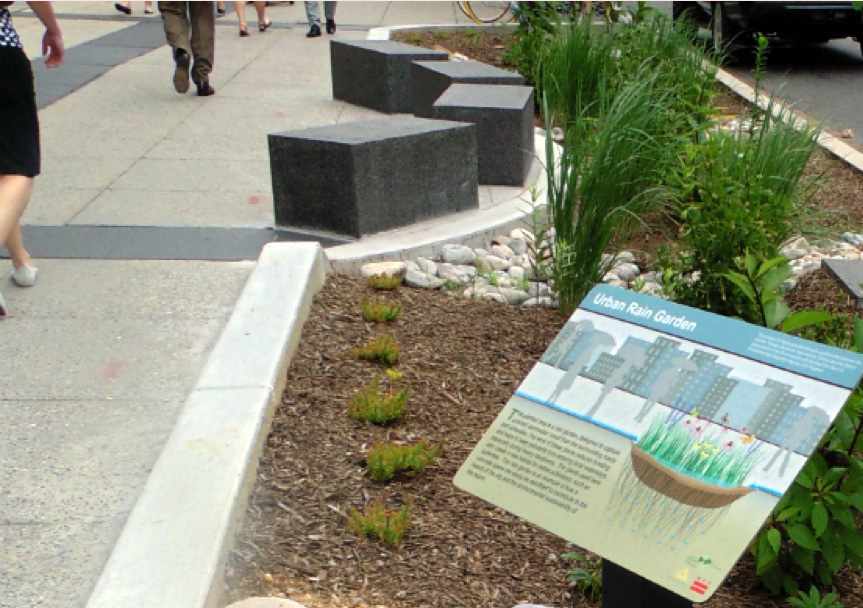
Closing the loop, the soil will be used for green infrastructure projects across the city, including tree planting and rain garden projects which will reduce the amount of stormwater runoff reaching the treatment plant. With less wastewater to treat, energy consumption will be further reduced. DC Water has also discovered through scientific research that soil generated from wastewater provides a significant boost to the drought resistance and yields of certain cereal crops such as corn.
For the future, DC Water is considering other renewable energy options to further reduce operating costs and cut greenhouse gas emissions. Indeed, one of the things that struck the Connect4Climate team during the visit was the vast surface area that the wastewater plant covers. Although the 153 acre site (62 hectares) is densely packed with water treatment systems, ample space is available to implement solar power panels. The utility is also exploring the possibility of treating food waste in the biodigester, which would further reduce waste going to landfill and Washington D.C.’s carbon footprint.
"There is no such thing as waste, only wasted resources." - DC Water
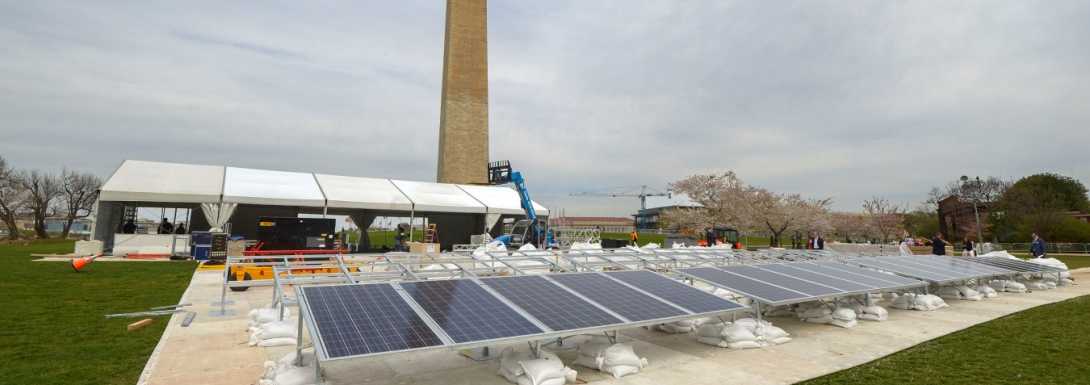
Our colleagues from Building Energy, one of our partners for Global Citizen 2015 Earth Day, arrived in Washington this week, ready to build the first-ever solar field on the National Mall, the power source of our Alcantara Magic Garden-Connect4Climate Pavilion. Thats right. Instead of using fossil fuels to light the overhead lights and electrify our computers, this Earth Day attraction will be powered by the sun.
The 3,000 square feet solar fieldthats about as big as a basketball courtlies right by the Washington Monument, a wonderful juxtaposition of symbols that remind us both of history and the future.
The National Mall isnt the only place where Building Energy is constructing solar fields. In fact, this visionary independent power producer headquartered in Milan, Cape Town and Washington DC has a fantastic story. Theyve made their mark by expanding into international markets where renewable energy sources off the greatest potential.
In five short years, Building Energy has developed 230 photovoltaic plants around the world, in places such as Dubai, Panama, and Belgrade. Their office in Cape Town, South Africa, is particularly busy; theyve secured projects in Namibia, Botswana, Zambia, Uganda, Kenya, and Lesotho. Theyve also constructed 30 projects in South Africa, including one in Kathu in the Northern Cape, which is now the biggest solar park on the continent. A subsidiary of Building Energy will also be constructing the first, and largest, biomass plant in Africa in Kwala Zulu Province that will be fueled by the combustion of sugar cane tops!
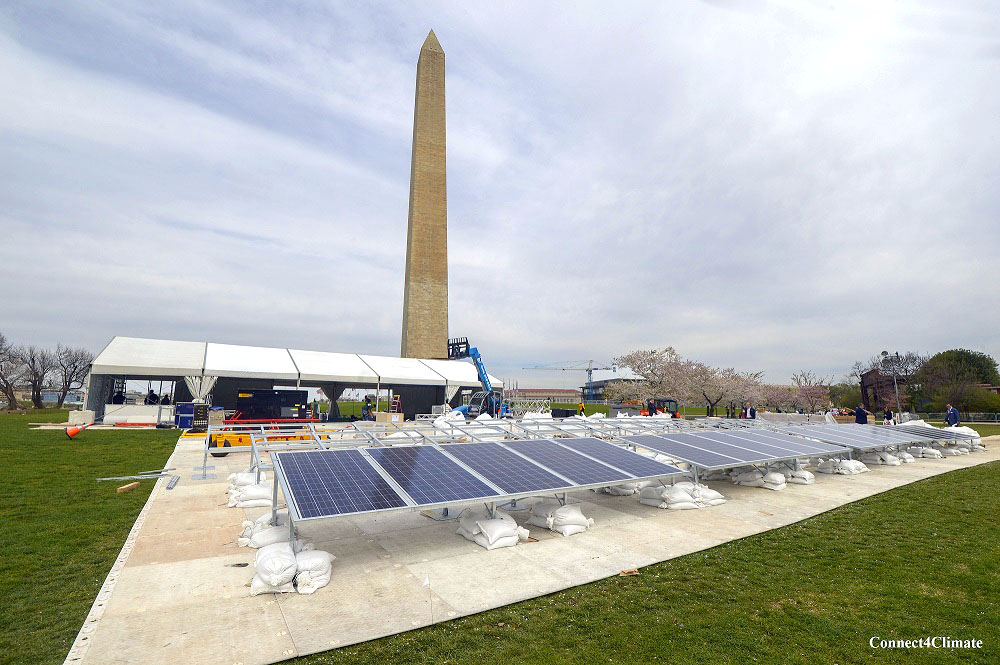
Building Energy’s solar panels are set to power the Alcantara Magic Garden-Connect4Climate pavilion on the National Mall. Come join us April 17 – 19! Photo by Leigh Vogel/Connect4Climate
With their visionary plans and intuition, Building Energy is an ideal partner for us at Connect4Climate. We can only imagine how productive our relationship will be in the future.
Find our more of what we are doing as we #TakeOn climate change.
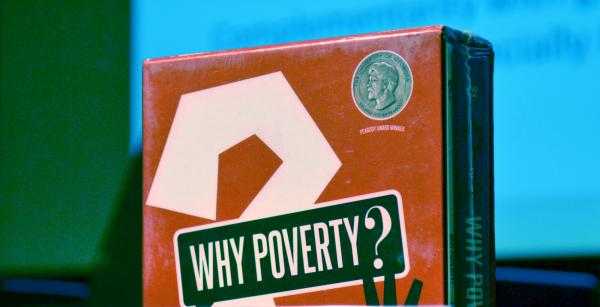
Energy is the single largest driver of development around the world. Access to adequate amounts for our burgeoning global population is one of the main challenges the world faces. For Africa, access to energy is very much tied to the environment; charcoal and firewood are the main sources of energy for much of the continent.
According to a recent study, Africa has a population of 300 million knocking on the door to middle class status. This upward mobility will put extreme demands on the continent’s struggling public resources like water and electricity. Middle class growth equals more consumption, and more consumption equals higher demand to power the continent’s purchasing habits. Cell phones, televisions, permanent housing, cars and office buildings all require energy.
The question is how can African states meet this increasing demand for energy without further harming the environment? The answer is not easily agreed upon, nor is there a single solution to the problem. Solar, wind, and hydro sectors, all have their implementation challenges across the continent’s large and varied landscape.
The answer perhaps lies in the smart implementation of a combination of the above energy innovations. It is only when we dig a little deeper that we understand how energy generation is acutely affected by climatic changes. Take for example East Africa’s challenge of generating enough hydro energy while maintaining a balance with the environmentally delicate Nile basin. Two publications recently looked closely at East Africa’s energy challenge. ESI-Africa looked at the challenges facing the countries dependent on the River Nile for hydro electricity:
Nile Technical Advisory Committee chairperson Fred Mwango told a Nile Basin Initiative (NBI) meeting here that Egypt and Sudan were still wary of water security due to their countries' geographic locations.
Stretching more than 6,600km from Lake Victoria to the Mediterranean, the Nile is a vital water and energy source for the nine countries through which it flows.
Less than 20% of the 300 million inhabitants of the NBI countries had access to electricity, while in some the figure was as low as 3%.
Annual per-capita electricity consumption in the Basin ranges from 1,800kWh in Egypt to only 20kWh in Burundi, whereas per capita consumption of 500kWh is considered a minimum level by today's standards.
Meanwhile, AFREPREN/FWD, looked at some solutions the region could implement to address the single-source problem:
Countries using renewable energy sources to diversify their electricity appear better able to survive the impacts of severe droughts than those relying exclusively on hydropower. For example, Kenya is more resilient than Tanzania and Uganda to drought-induced power generation shortfalls, because Kenya uses a wider range of renewables, including geothermal power, biomass generation and, to a lesser extent, wind.
Diversification as a strategy will need technologies able to adequately meet the needs of a growing continent. Africa contributes over a billion of the Earth’s now 7 billion humans. Solar energy, for all its renewability, lacks mature distribution strategies--although several small initiatives, like our partner Solar Sister in Uganda, are working to that end. Additionally, the cost of solar power is still out of reach for those needing to power more than a desk lamp.
The call for diversification of sources of clean energy is all well and good, but particular attention must be paid to the need to invest in next generation infrastructure to deliver power to the last mile. While solar power offers the ability to leap-frog the need for an energy distribution infrastructure, large-scale use of solar power will still require investments in infrastructure. For example, Egypt’s first solar thermal plant, which went live earlier this year just outside of Cairo, required a $220 million investment.
There exist vast opportunities to spur green economies to address the problem of energy poverty on the continent. But is the continent ready to accept that challenge? How can Africa collectively mobilize to maximize its efforts towards a zero emissions energy strategy? Should funding organizations re-strategize priorities towards energy infrastructure development on the continent? Energy poverty and environmental concerns are complexly intertwined. But the deeper the complexity, the more marketable opportunities there are for the continent. Perhaps a great starting point to set off a needed discussion on this topic is, “what happens if Africa doesn’t find an adequate solution to power its growing middle class?”
Hosted by the World Bank Group and supported by Italy’s Ministry of the Environment and Energy Security and Germany’s Federal Ministry for Economic Cooperation and Development, Connect4Climate (C4C) is a global partnership for a livable planet that connects, creates, and communicates to build long-lasting change for future generations.